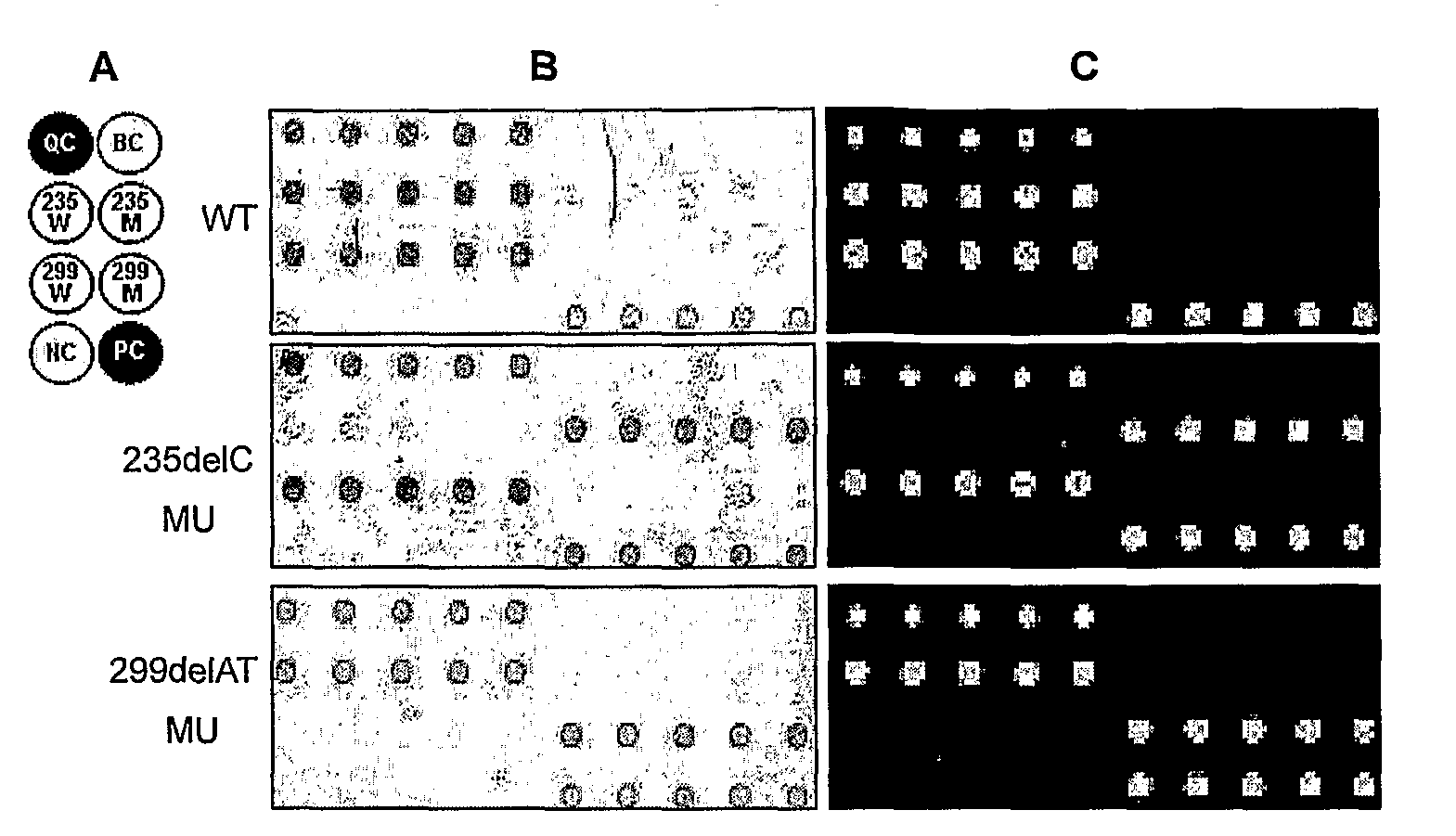Methods for identification of alleles
a technology of alleles and gene analysis, applied in the field of allele identification methods in gene analysis, can solve the problems of low accuracy, high cost, complicated procedures, and neither is capable of high-throughput/large-scale genetic polymorphism analysis, and achieve the effect of low homology
- Summary
- Abstract
- Description
- Claims
- Application Information
AI Technical Summary
Benefits of technology
Problems solved by technology
Method used
Image
Examples
example 1
Analysis of Patient Samples with Known Mutant Alleles in Hereditary Deaf Genes Using the Universal Array and Method of the Current Invention
[0056]1. Sources of Clinical Sample and DNA Extraction
[0057]Patient samples with known mutant alleles in hereditary deaf genes were provided by the Department of Ear Nose and Throat of the Chinese PLA General Hospital. Genomic DNA was isolated from whole blood samples using the Wizard® Genomic DNA Purification Kit (Promega, Madison, Wis., USA).
[0058]2. Synthesis of Primers for Multiplex PCR and Probes for Universal Array
[0059]Multiplex PCR primers and probes used for analyzing a total of 11 mutation loci in 4 target genes listed in Table 1 are the following:
[0060](1) Primers
[0061]Sequences of all primers for the multiplex PCR are shown in Table 1.
[0062]In column Mutation Type “del” represents a deletion mutation, e.g., 35delG means a deletion of G at position 35 of the GJB2 gene with GenBank Accession Number of NM—004004.4; “>” represents a subs...
example 2
Magnetic Bead-Assisted Detection of ASPUA
[0086]In order to simplify the testing protocol and reduce the reliance on equipment by this method, we employed magnetic bead labeling so that assay results could be photographed with a CCD camera or viewed under low magnification microscope, which made the complicated genetic analysis easy and simple.
[0087]The 235delC and 299delAT mutations were chosen for this experiment. The fluorescent dyes on relevant primers and probes were replaced by biotin. The PCR parameters, hybridization and washing steps were conducted as described in Example 1. Streptavidin-coated MyOne™ Dynalbeads (Dynal Invitrogen, Oslo, Norway) were used to show hybridization results. Streptavidin-coated beads were first pretreated according to the protocol from the supplier, followed by the addition of magnetic bead buffer to the array block. After incubation for 10 minutes at room temperature, magnetic beads that were not specifically bound were removed by a magnet and the...
PUM
| Property | Measurement | Unit |
|---|---|---|
| Temperature | aaaaa | aaaaa |
| Magnetic field | aaaaa | aaaaa |
| Electric charge | aaaaa | aaaaa |
Abstract
Description
Claims
Application Information
 Login to View More
Login to View More - R&D
- Intellectual Property
- Life Sciences
- Materials
- Tech Scout
- Unparalleled Data Quality
- Higher Quality Content
- 60% Fewer Hallucinations
Browse by: Latest US Patents, China's latest patents, Technical Efficacy Thesaurus, Application Domain, Technology Topic, Popular Technical Reports.
© 2025 PatSnap. All rights reserved.Legal|Privacy policy|Modern Slavery Act Transparency Statement|Sitemap|About US| Contact US: help@patsnap.com



